Copper Canyon – Mexico’s Most Amazing Wonder
In my last post I described the wonderful train ride from Chihuahua to Divisidero on board Mexico’s last passenger train, El Chepe. My destination was Copper Canyon, one of seven canyons or barrancas as they are called in Mexico, that make up the largest and one of the deepest canyon systems in the world. In this post I’ll describe just a few of the things that you can do at Copper Canyon other than just gawk at the amazing scenery, but let’s start off with a photo that will set the tone.
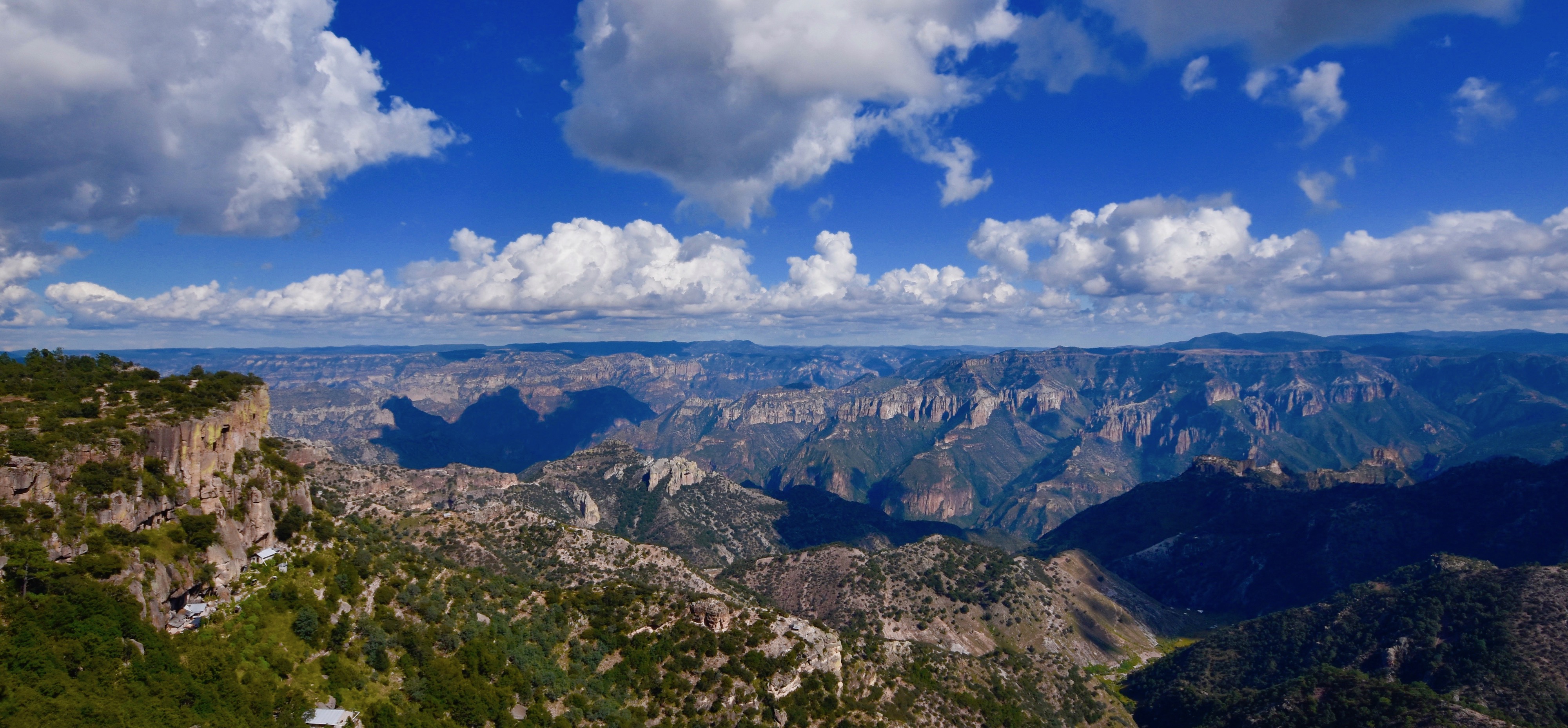
Hotel Mansion Tarahumara
After stopping at Posada Barrancas just a few miles past Divisidero, we detrained from El Chepe and were met by a bus from the Hotel Mansion Tarahumara and driven a short distance to the hotel premises. There are two hotels with rooms that are literally right on the edge of Copper Canyon and have million dollar views at a fraction of the price. The most luxurious is Hotel Mirador which you can see in this photo I took from our hotel. We dropped in there for a drink and it is fantastic place with the added bonus that you can drive right up to it.
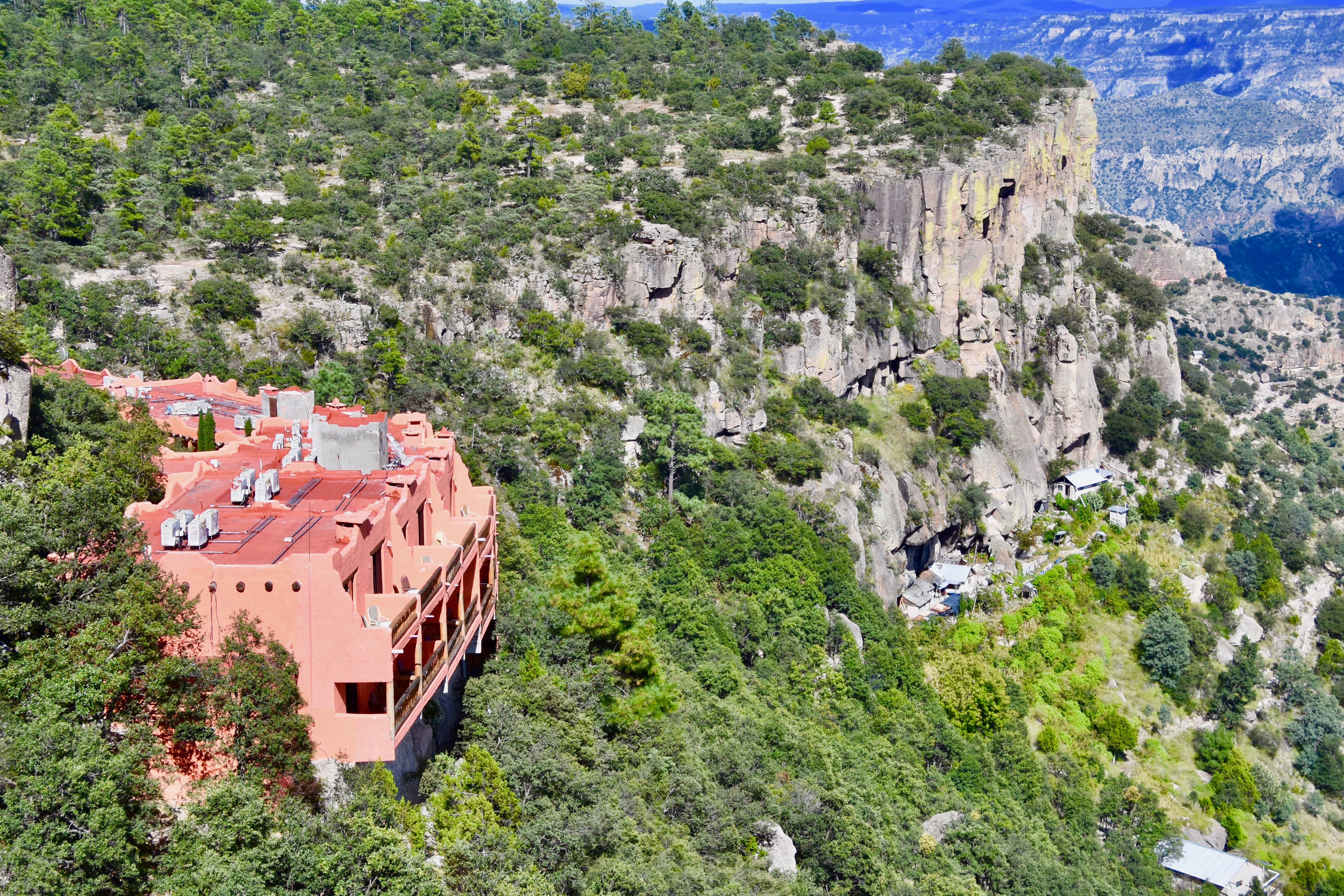
While you can drive right up to the main entrance to Hotel Mansion Tarahumara where you get to see why it is called a mansion, to get to your rooms overlooking Copper Canyon you do need to walk up a bit of a distance. Usually no problem, but at this altitude, unless you are in super shape, you will be puffing by the time you arrive.
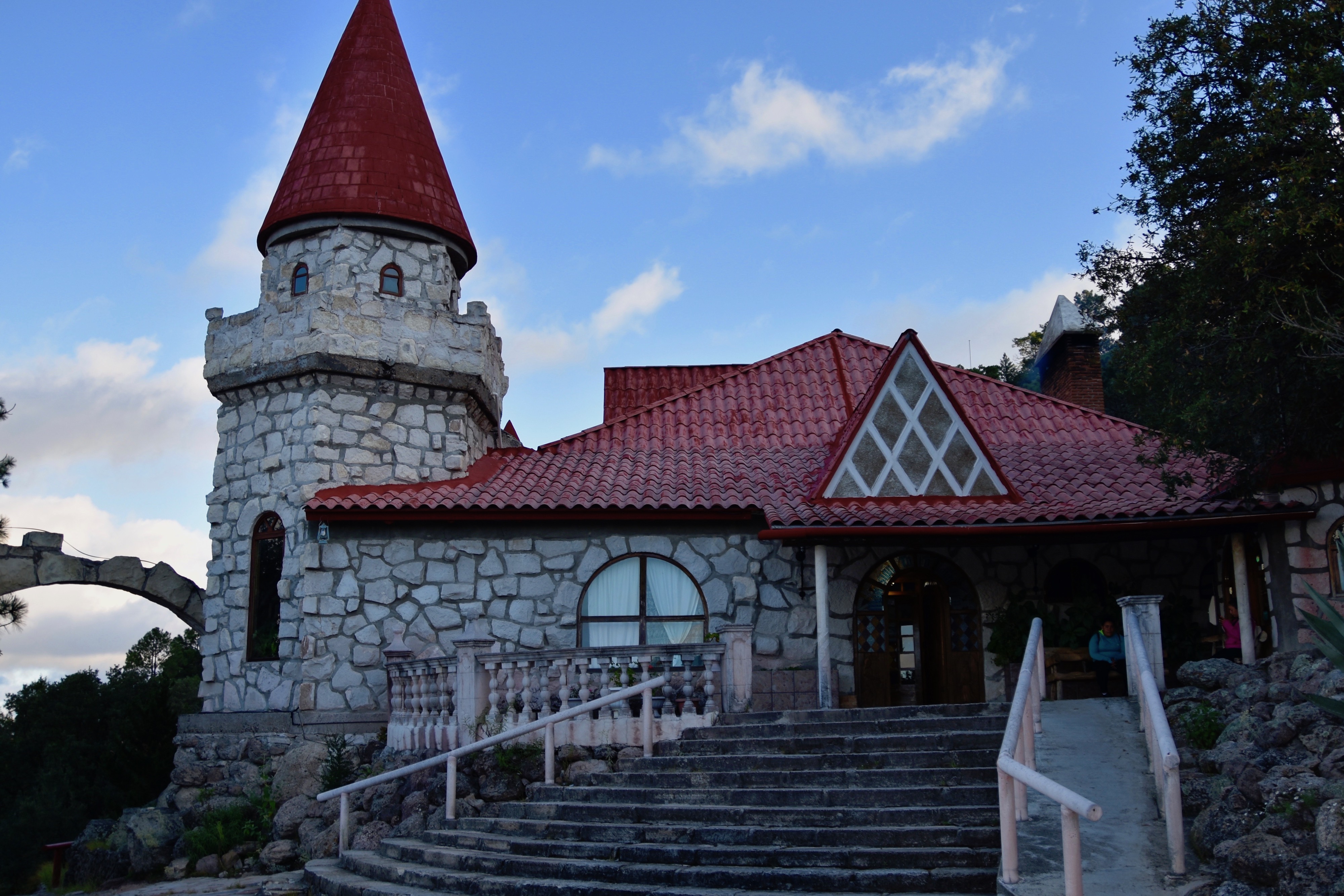
The good news is that you get this view, especially if you ask for one of the upper level rooms.
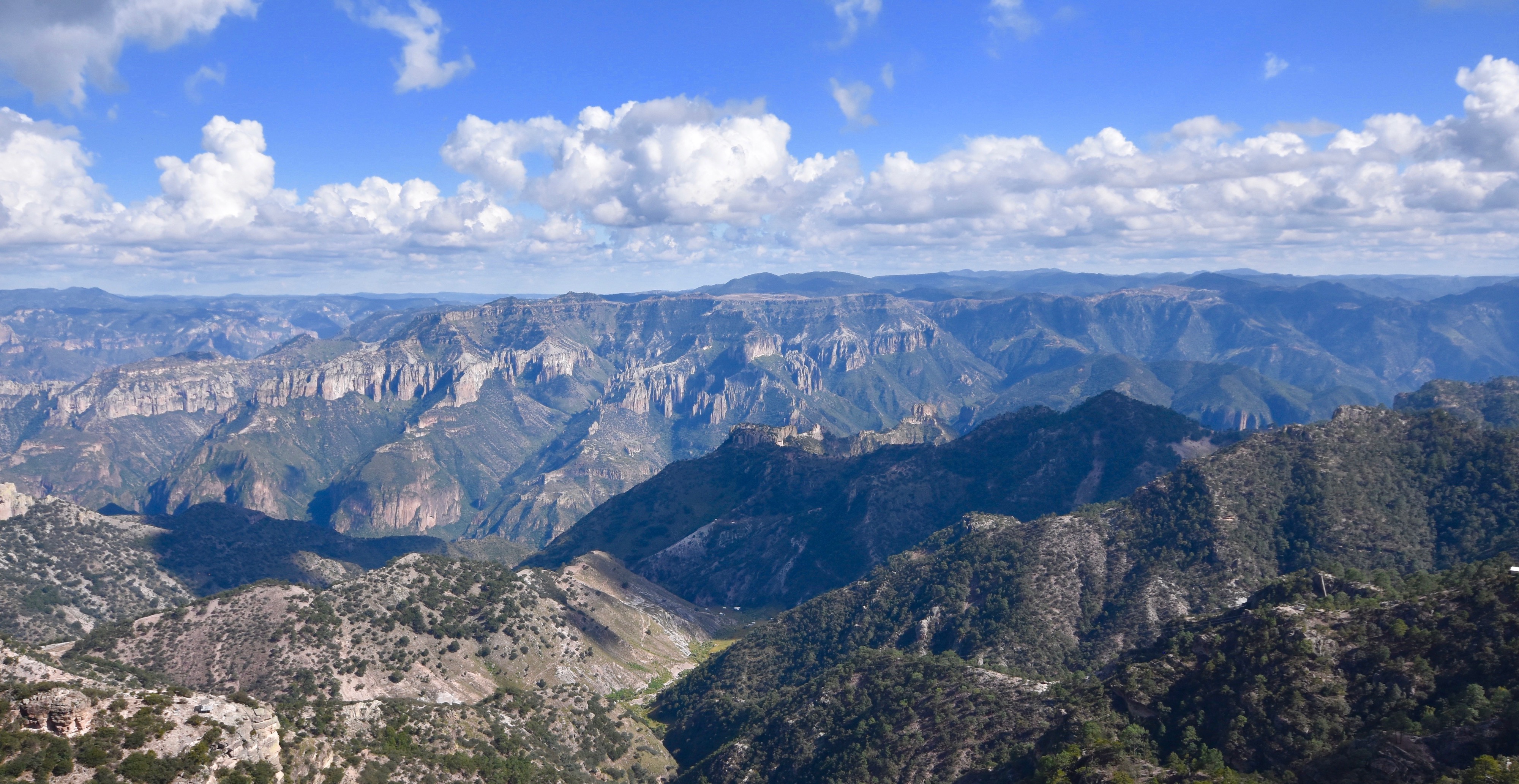
Our rooms were not assigned by name so we all just grabbed a key and unfortunately I picked one of only two rooms, 201 and 202, that did not have this great view. However we did have a large flat rock with a dropoff of about five hundred feet from where this photo was taken. Members of our group, or at least those not terrified by being this close to the edge, took a myriad of photos here in just about every yoga pose imaginable. I am not anywhere near that supple so settled for this pose with Alison.
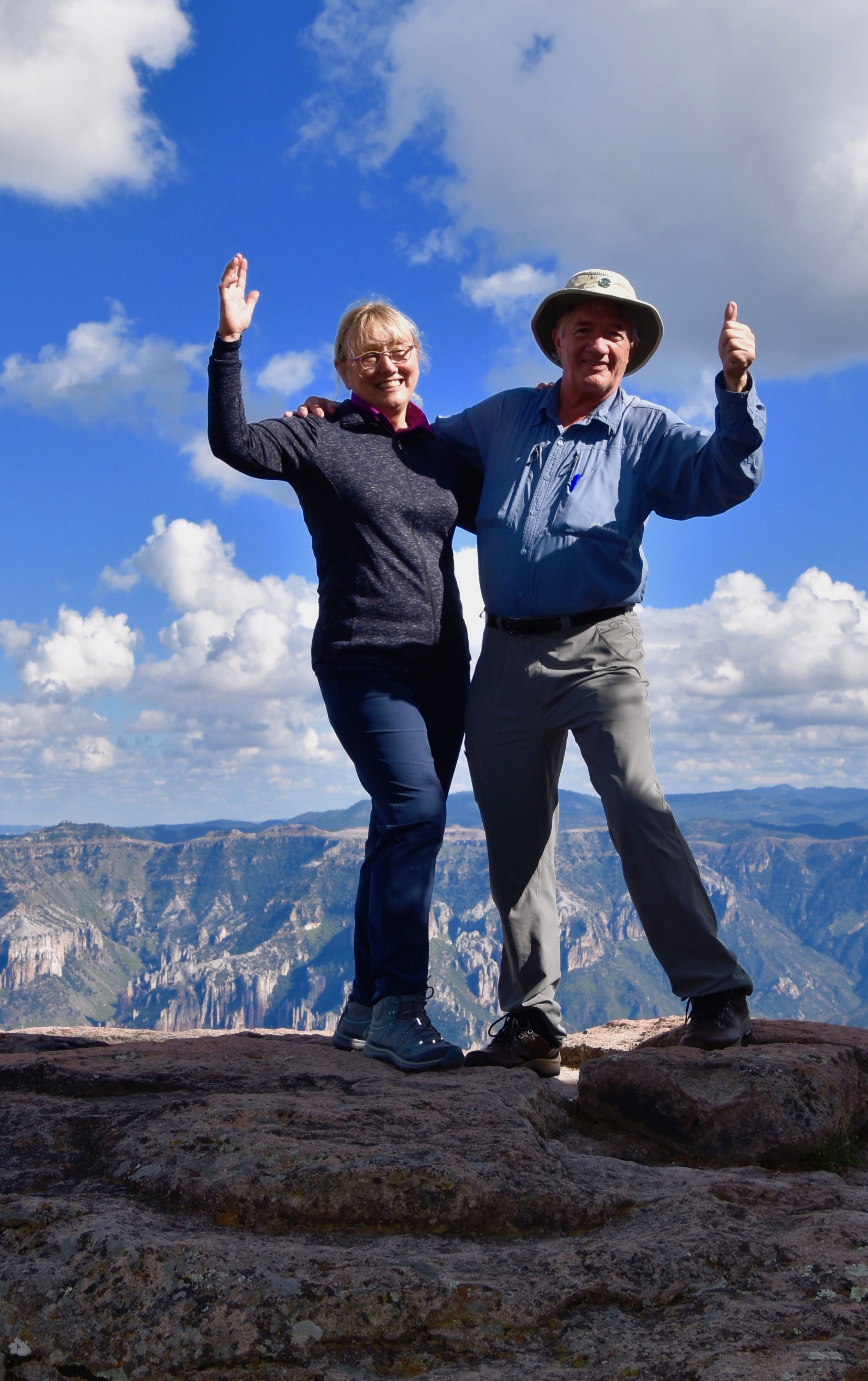
While the rooms at Hotel Mansion Tamahumara are nothing special, the food was very good and I had the best margarita I’ve ever had there. The bartender made it from scratch using sotol instead of tequila. Sotol is made from wild harvested agave plants grown in the state of Chihuahua and is, in effect, the regional equivalent of tequila which by definition comes from the state of Jalisco. Whatever its properties, a sotol based margarita at Hotel Mansion Tarahumara is worth every penny.
For well less than $200 USD a day you can stay at one of the premium rooms at this hotel and get three meals a day included. Now that’s a great deal.
Visiting the Tarahumara
The Indigenous people of the Copper Canyon area call themselves the Rarámuri, however, the Spaniards called them the Tarahumara and that seems to be the term most people now apply to the 50,000 to 70,000 people who still live largely as they did hundreds of years ago. As a people the Tarahumara were never conquered by the conquistadors, but did retreat deep into the recesses of Copper Canyon and the other barrancas of this area of Chihuahua. From the large rock in front of our room I could look down and see various Tarahumara homes spread out at the base of the cliffs below. They do not live in villages, but rather in family groups. Adrian, our excellent guide during our stay in Chihuahua state asked if we’d like to take a hike down to visit one of these Tarahumara homes. The answer was unanimously, yes.
The Tarahumara are famous for one outstanding physical ability – they can run simply amazing distances without tiring. In fact their word for themselves, rarámuri translates as ‘the people who run’. Wearing a unique type of footwear called a huarache, the men can run distances of up to eighty miles (128 kms.) without stopping and the women slightly less. One of first ultra marathons was run by several Tarahumara men way back in 1926 and ultra marathoners flock to Copper Canyon to follow in the footsteps of these running prodigies. We ran into a group of them at the hotel – fresh faced, eager and to my mind, absolutely crazy.
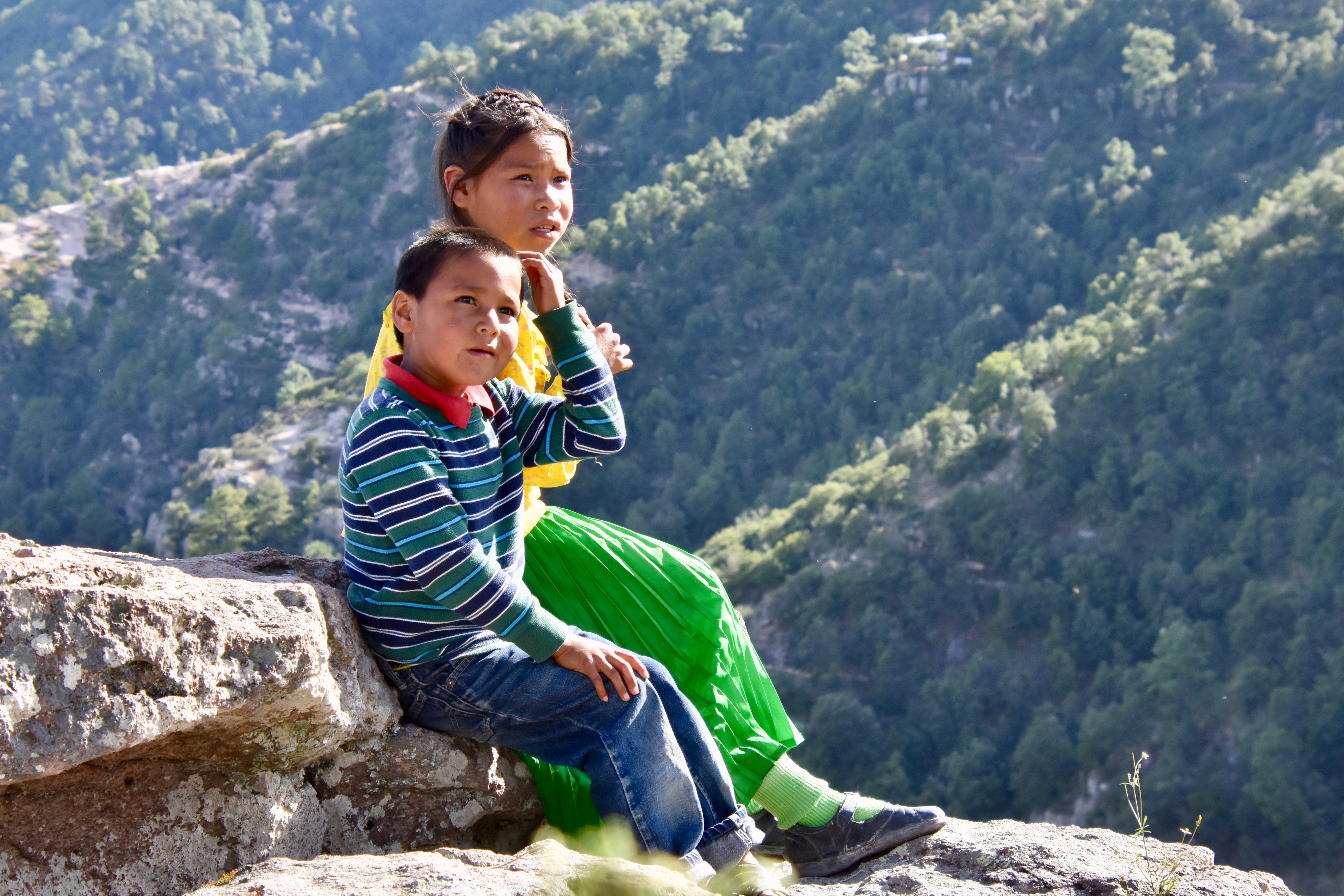
We made our way down to the Hotel Mirador where a path begins that takes you down to a Tarahumara family settlement. While the Tarahumara still largely live without what we would call the necessities of life – electricity, indoor plumbing, smart phones etc., they have made several concessions to western ways. One of these is not because they want to. In this photo you can see the girl dressed in traditional Tarahumara costume save for the sneakers. Most of the women and girls we encountered still dressed traditionally, but not the men and boys. The reason is that the proper male Tarahumara garb resembles what we might think of as a dress. It is an unfortunate fact of life that people who dress up like girls as seen through non-Tarahumara eyes, i.e. most Mexicans, get teased, bullied or worse. Thus the wearing of traditional male Tarahumara is limited to ceremonial occasions or in private places.
The second concession to modern life that the Tarahumara have made is that they earn money by selling handicrafts they make to tourists. Now don’t get me wrong here. The crafts they make are wonderful and dirt cheap and they do not try to pressure tourists into buying them. From what I observed in the few days we were in the Copper Canyon area, the Tarahumara are a humble, peaceful and gentle folk clinging to a way of life that is becoming increasing difficult to maintain.
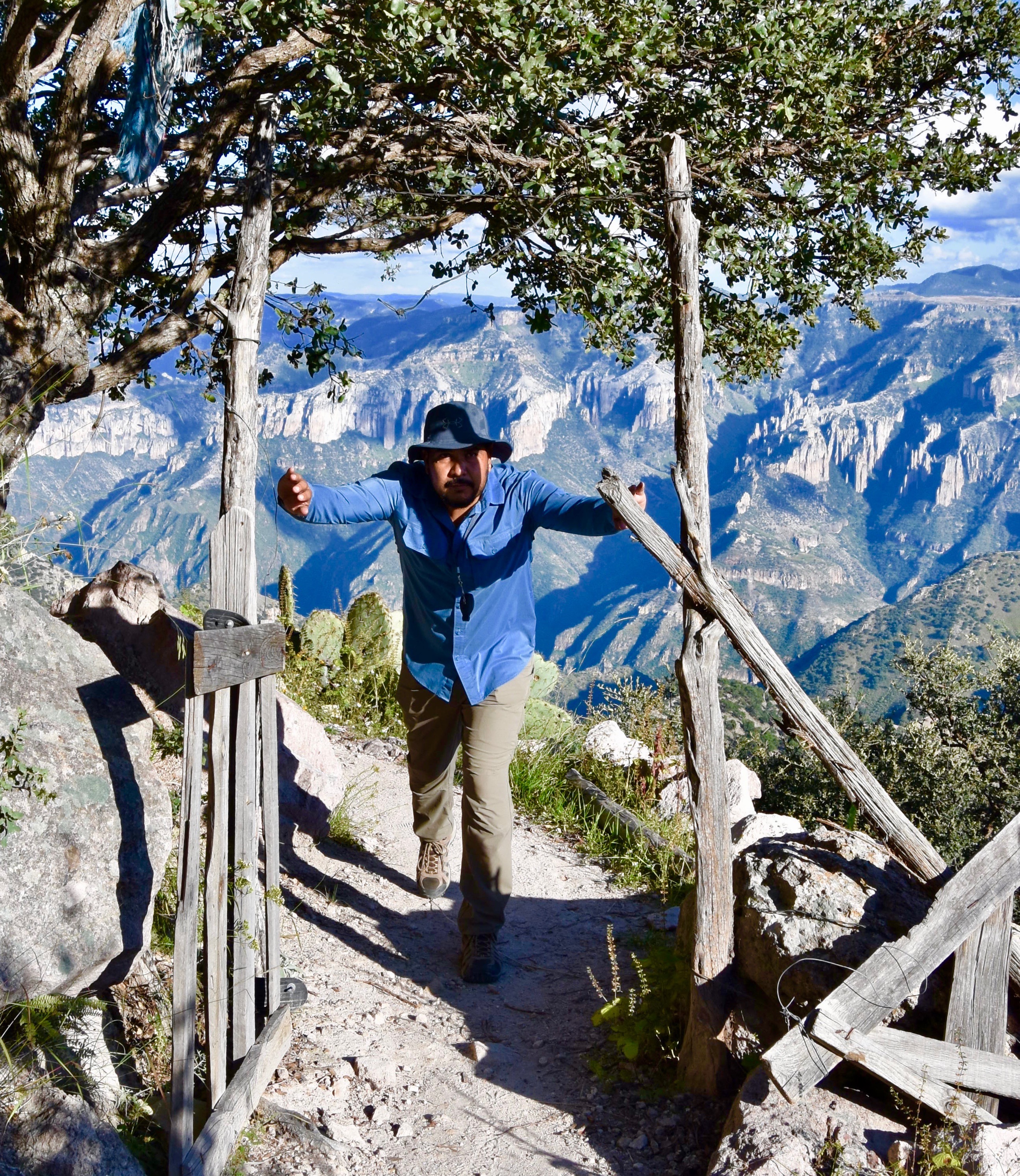
We made our way down a steep path to the bottom of a cliff which had a small house built right into a natural cave. At one time, the Tarahumara lived entirely inside these type of ledge like caves which are prevalent throughout the Copper Canyon area.
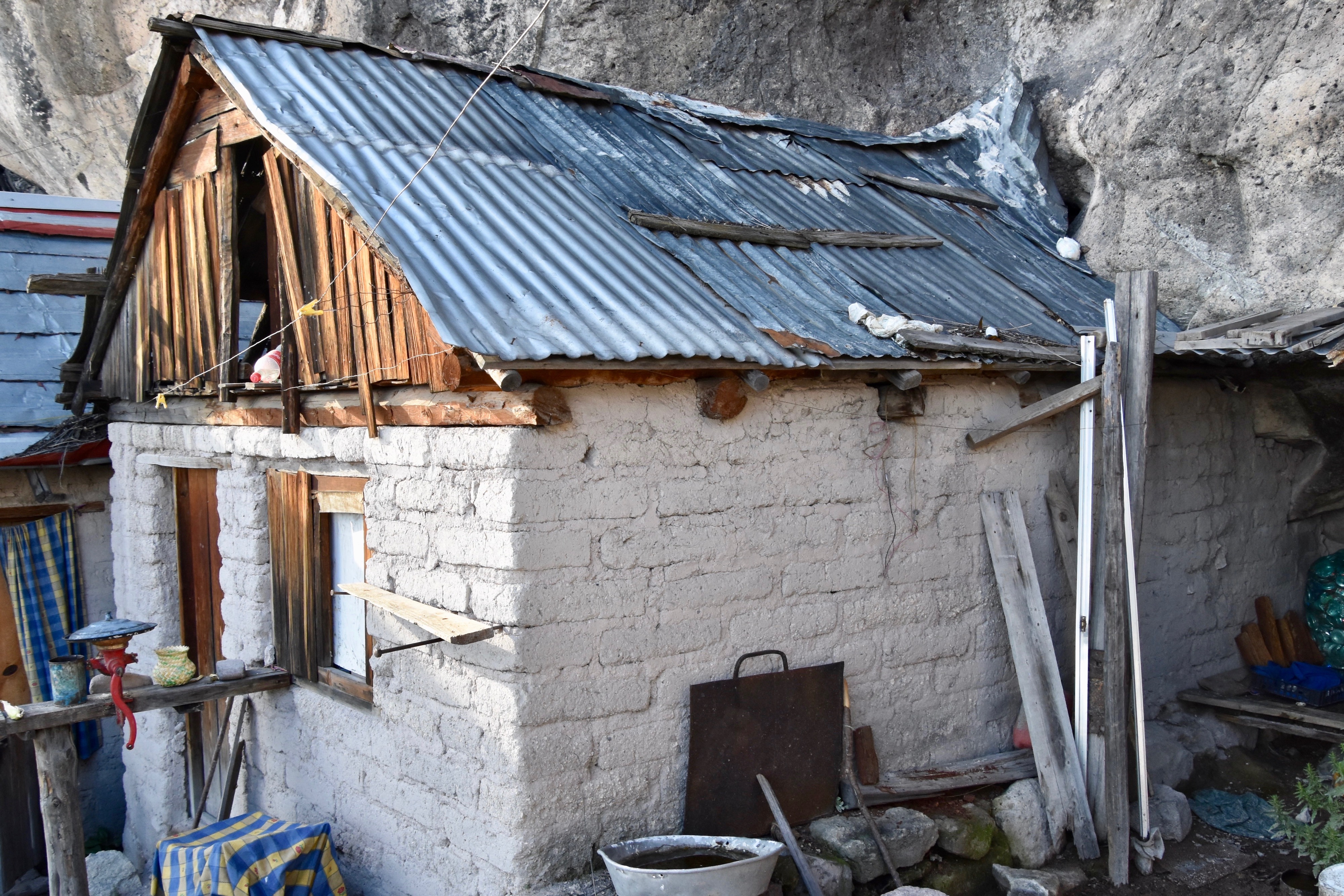
As it was during the mid-afternoon that we visited the men were away working while the women were making handicrafts and looking after the children. We received a warm greeting from this elderly matriarch.
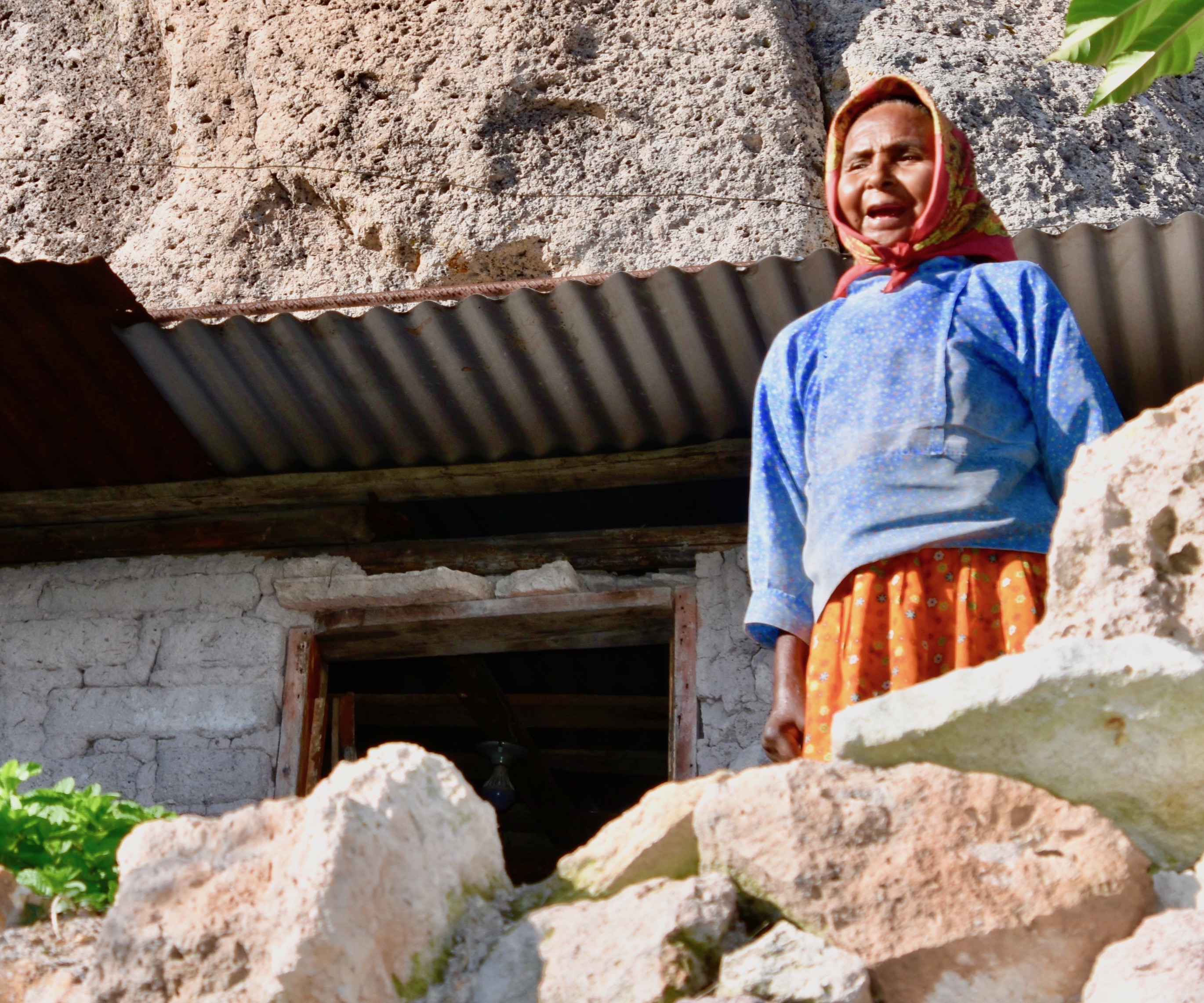
Each family settlement that you can get to by foot usually has a selection of handicrafts on display like this one above. The baskets are probably the signature Tarahumara product and it is amazing the speed with which the women can weave one of these by hand.
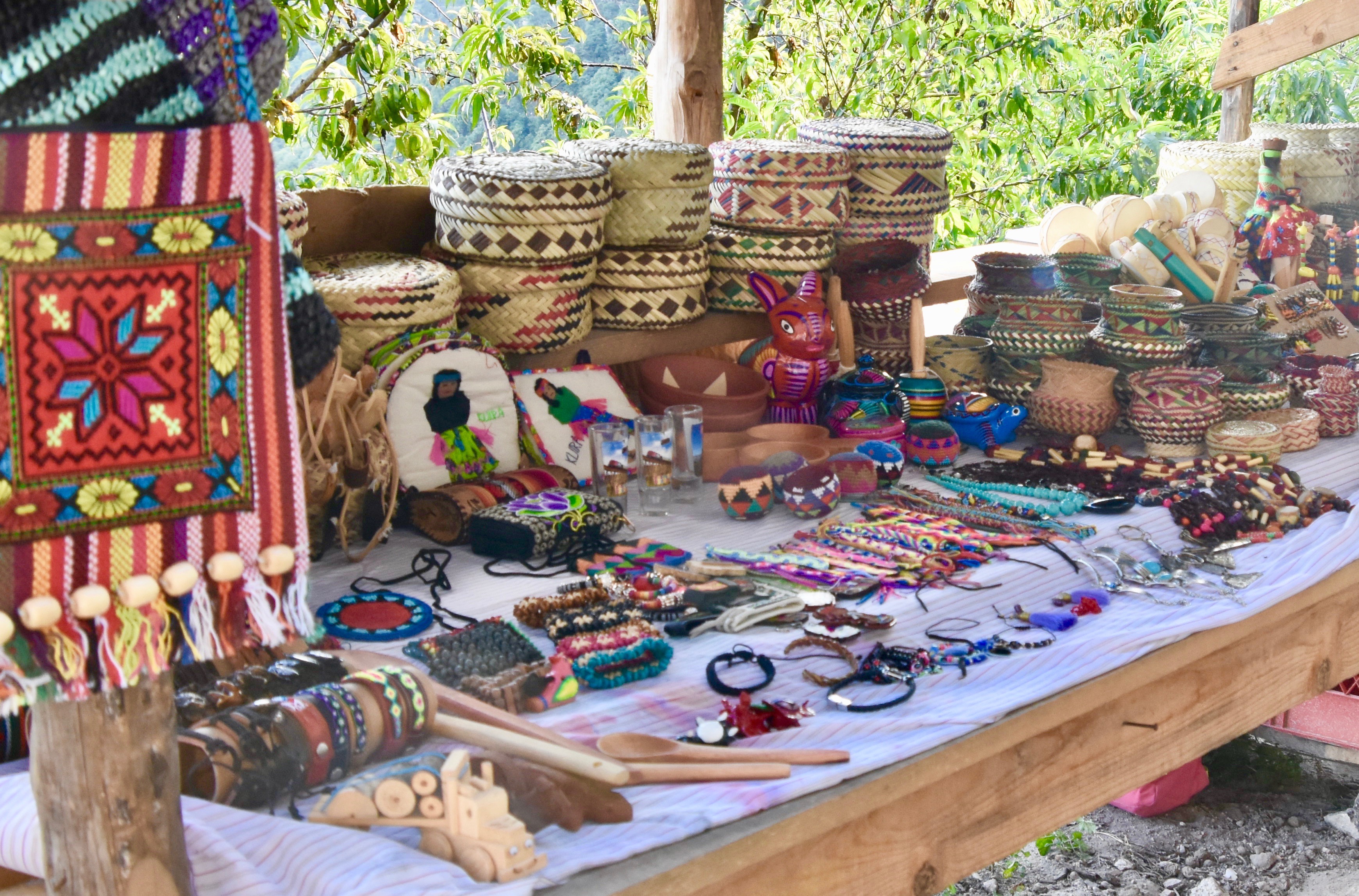
This is the water supply for this family, although I suppose it could double as a wading pool on really hot days.
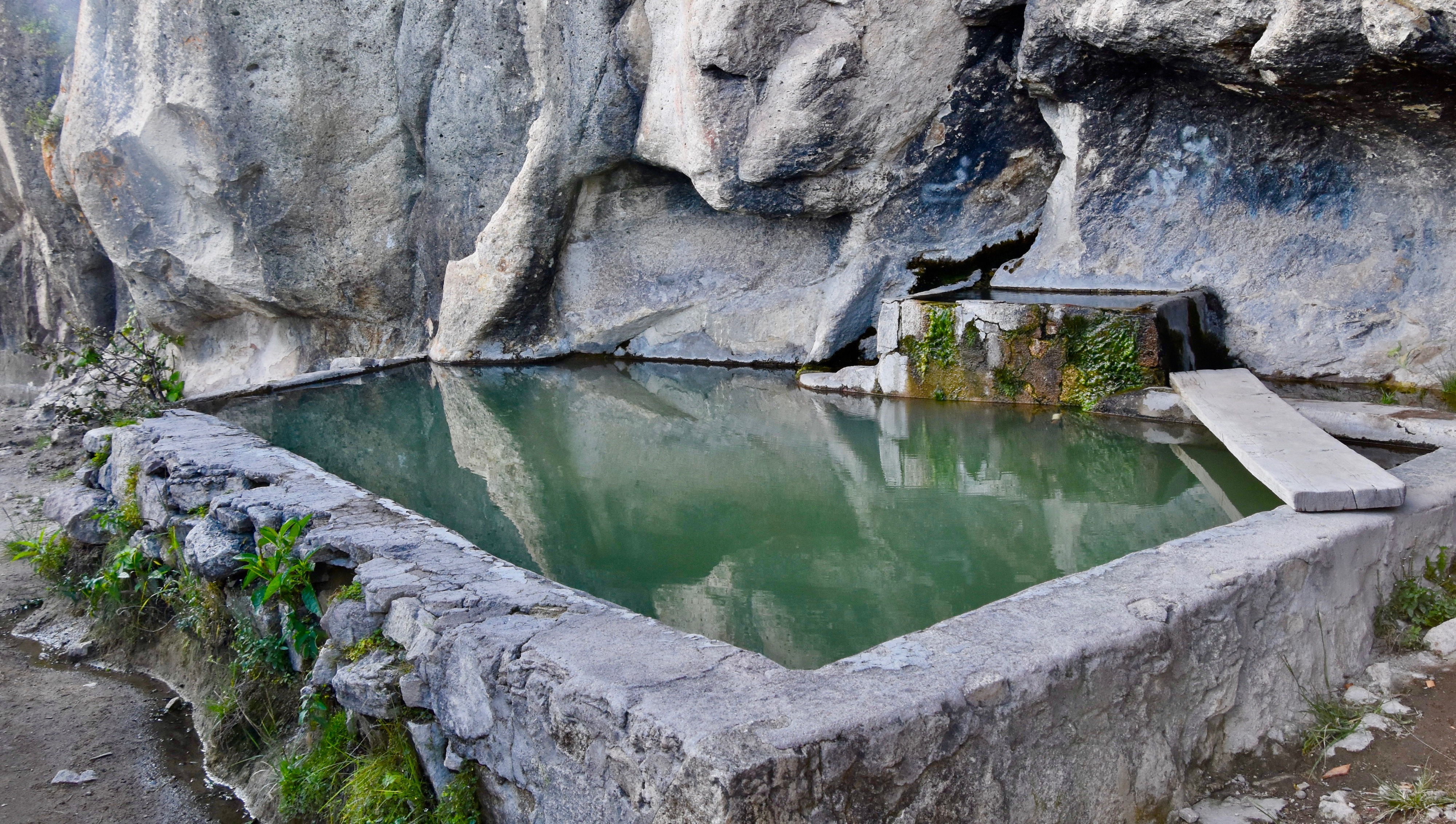
The Tarahumara are incredibly photogenic and are happy to pose, unlike many other Indigenous peoples around the world who fear that having their images captured also means their souls are trapped as well. Courtesy demands that they be given a few pesos for helping to create a memory that for us is very precious and long lasting.
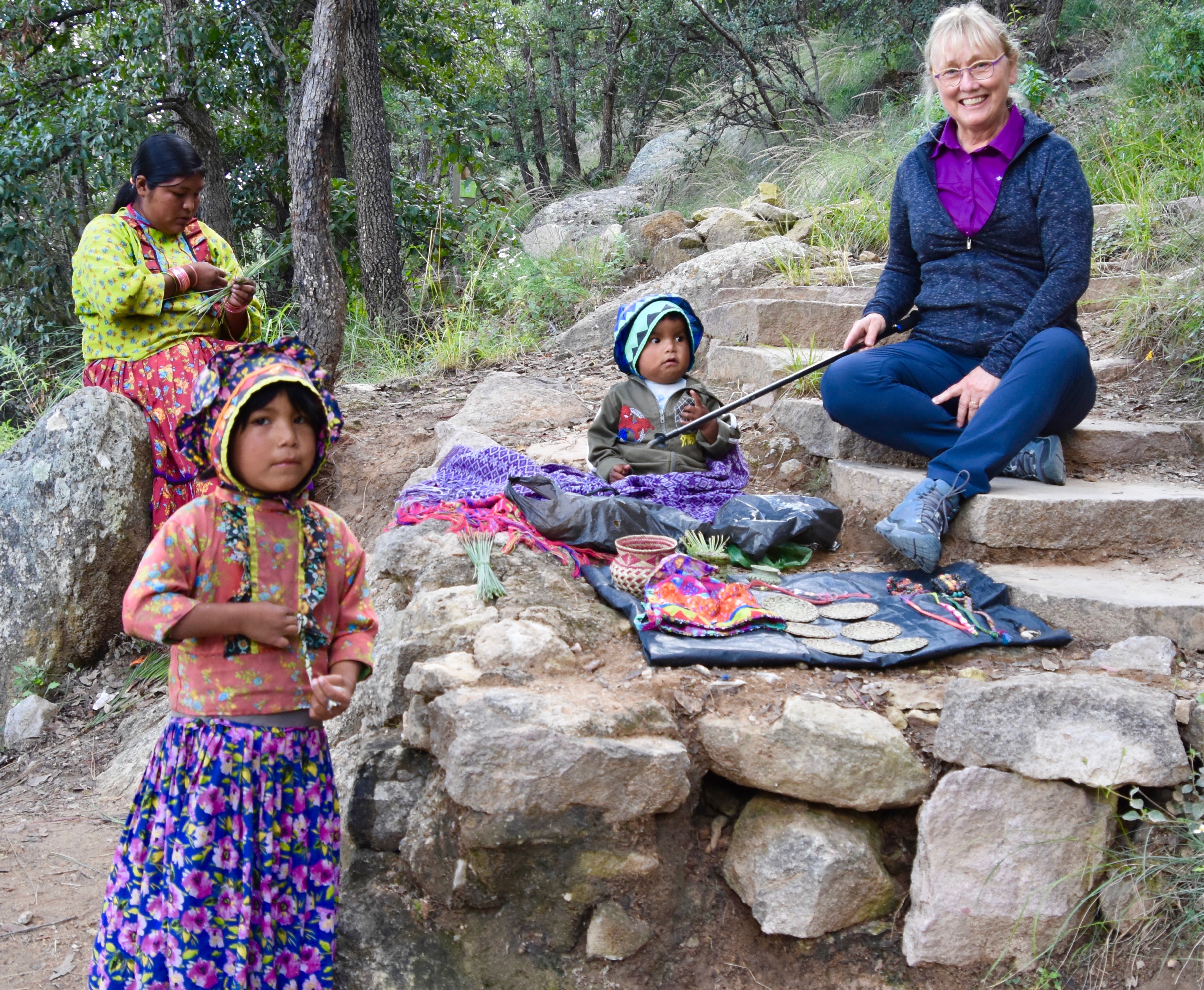
Copper Canyon Adventure Park
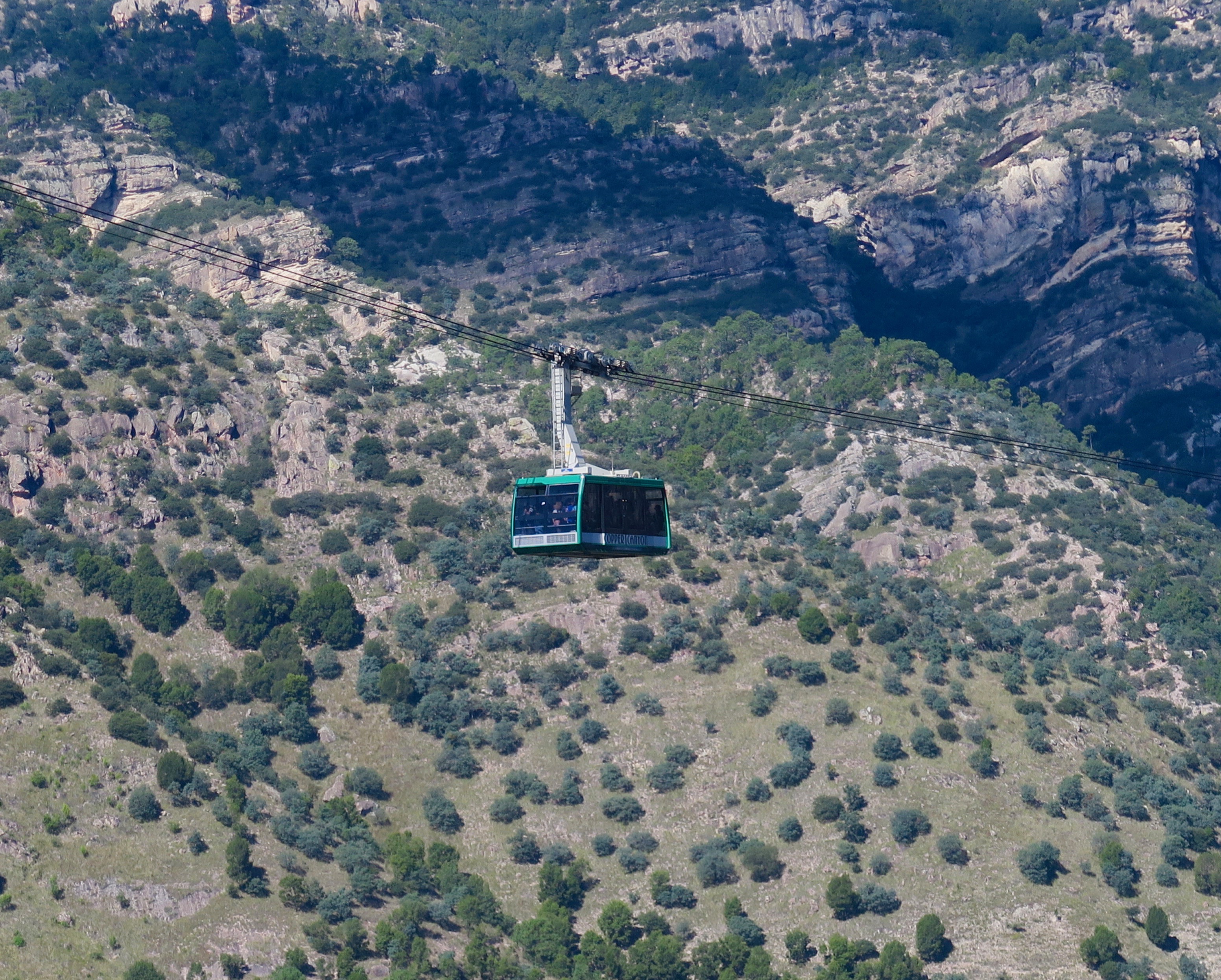
On our second day in Copper Canyon Adrian took us to Barrancas del Cobre Parque de Aventura which translates as Copper Canyon Adventure Park. Considering how remote and difficult it is to get to the Copper Canyon area this is a truly remarkable place where there is a variety of activities for the both the adventuresome and the timid. The centrepiece is the tram which provides an incredible panoramic view of the junction of Copper, Tararecua and Urique canyons, the latter of which is 1879 metres (6164 feet) deep.
From the mirador you can see one of those famous overhangs that people stand or sit on with their legs dangling over and give the willies to anyone watching them. They had to block off access to this one to prevent such idiocy that can lead to tragic results, but still just the thought of standing on it creeped me out. I’m not afraid of heights, but sometimes enough is enough.
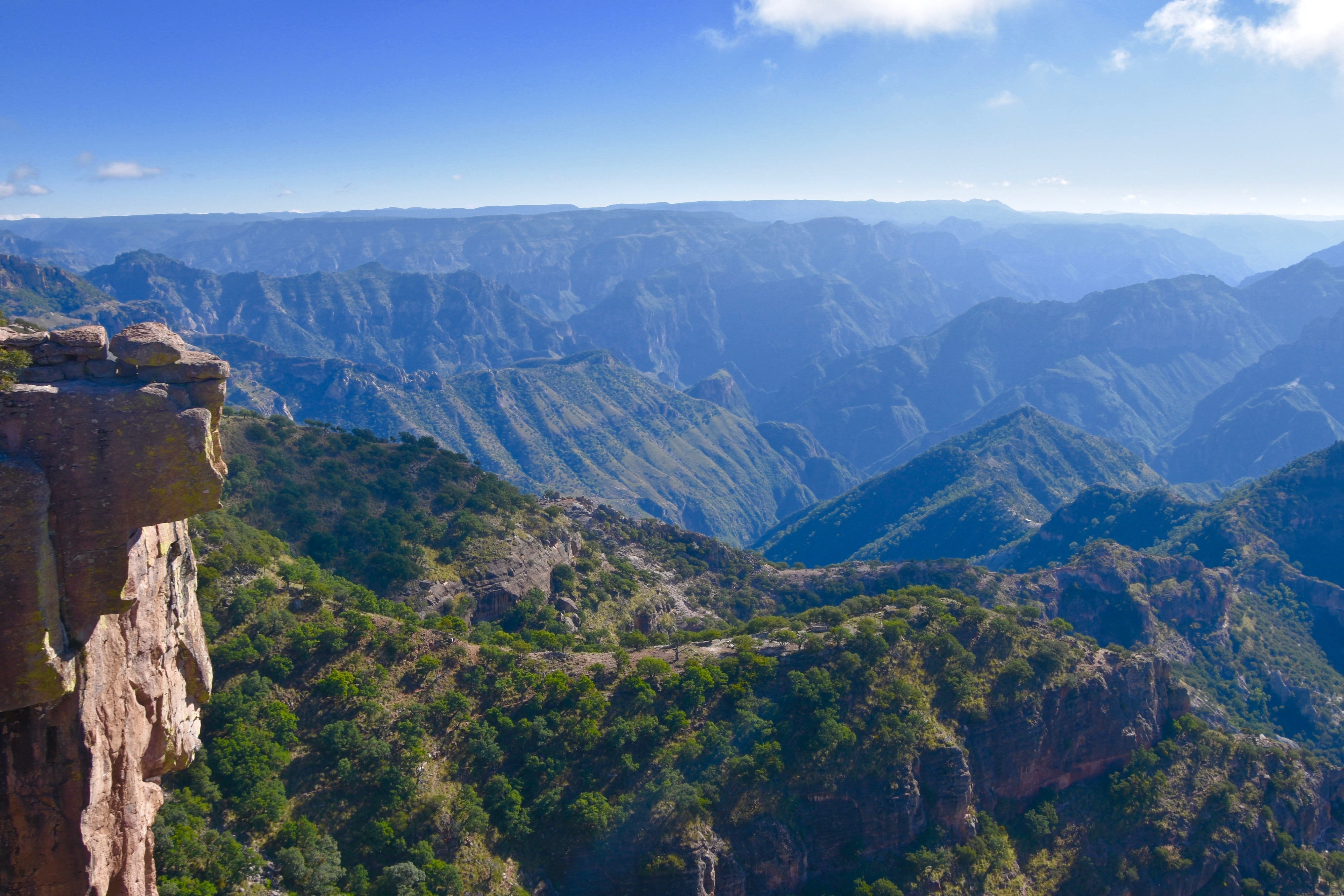
For those who are aren’t afraid of heights, try walking the beams on the glass floor of the restaurant.
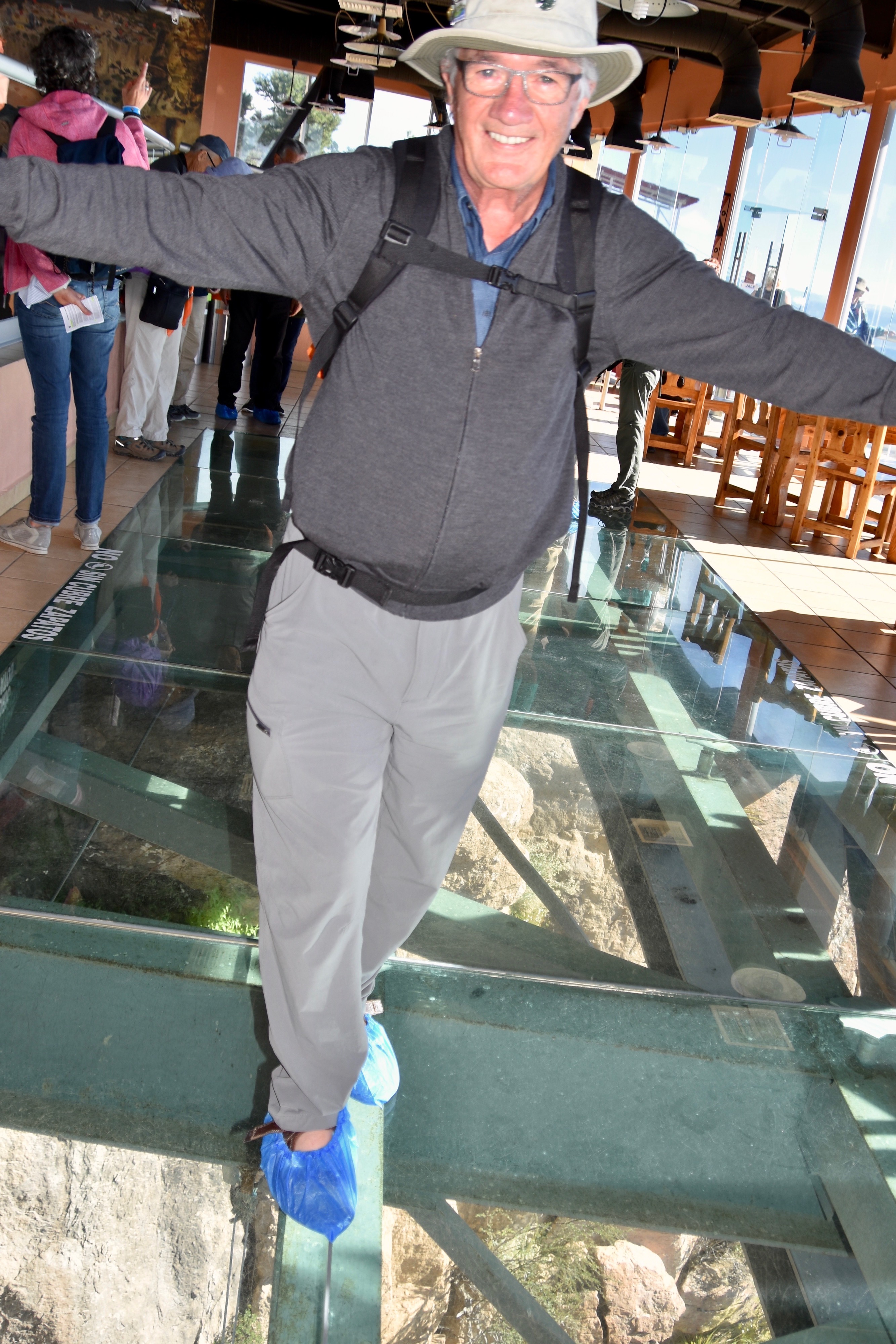
This is what you see looking straight down.
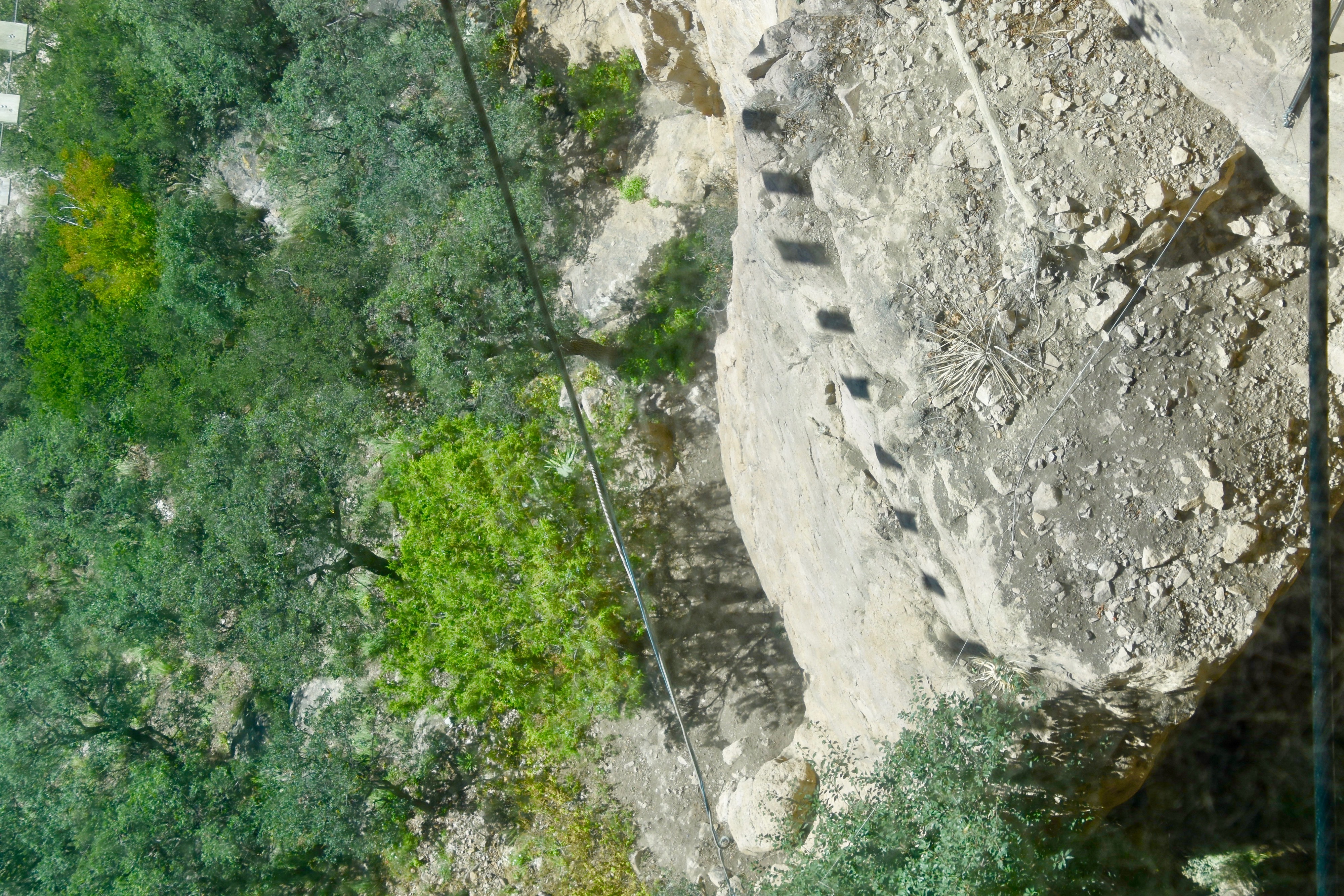
For Alison and I the most intriguing attraction was the zip rider, the longest zip line in the world which supposedly attains speeds of up to 80 mph while transversing the canyon floor over 1,000 feet below. Unlike most zip lines where you need to brake yourself using your hands, in the zip rider you are seated and can give your full attention to the majestic setting you are in. This is a shot of the mesa upon which the tram station at the other side of the ride. Below it to the left is where the zip rider takes you to.
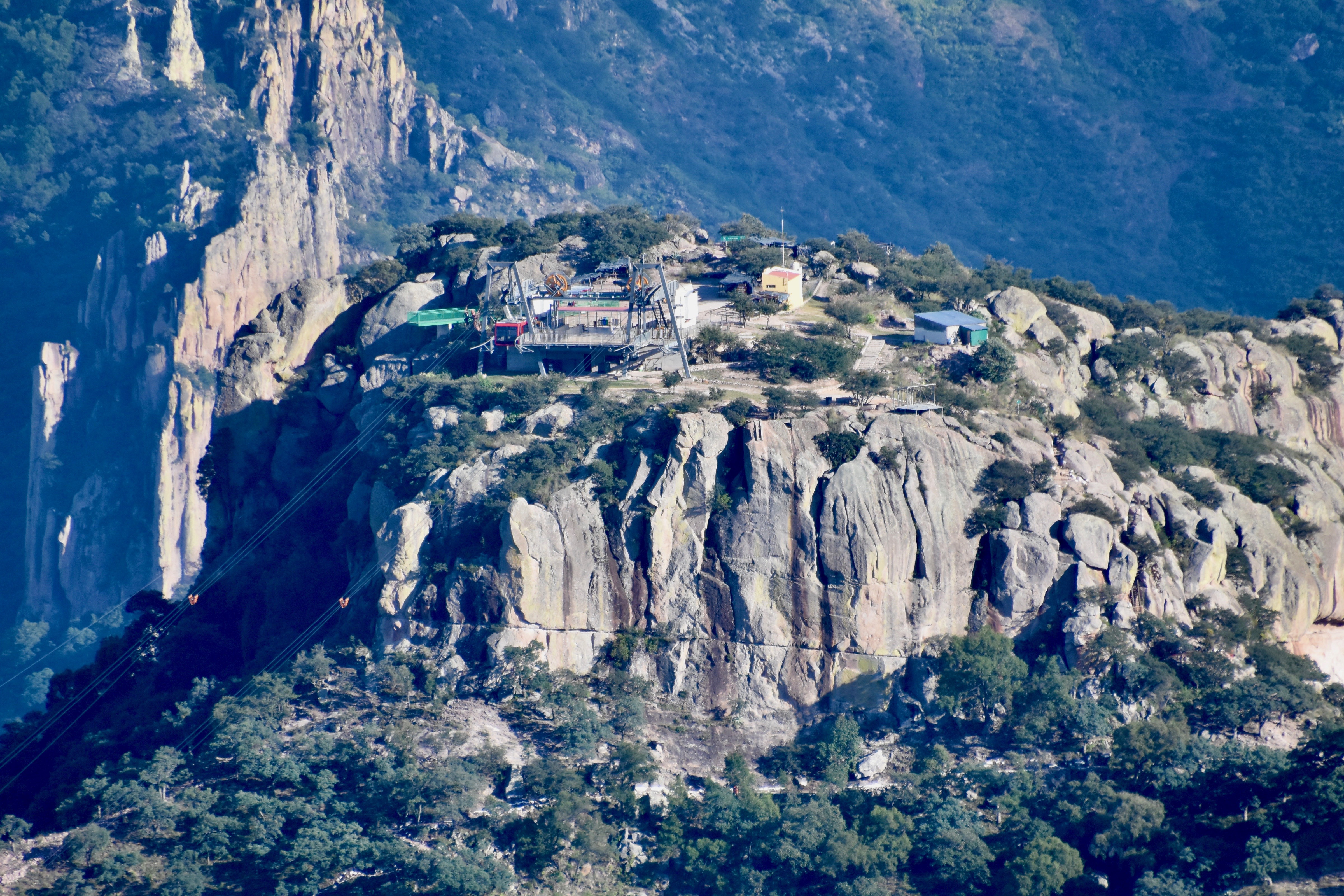
This is what it looks like just before takeoff. They open the door and you fly out like a bull rider at a rodeo.
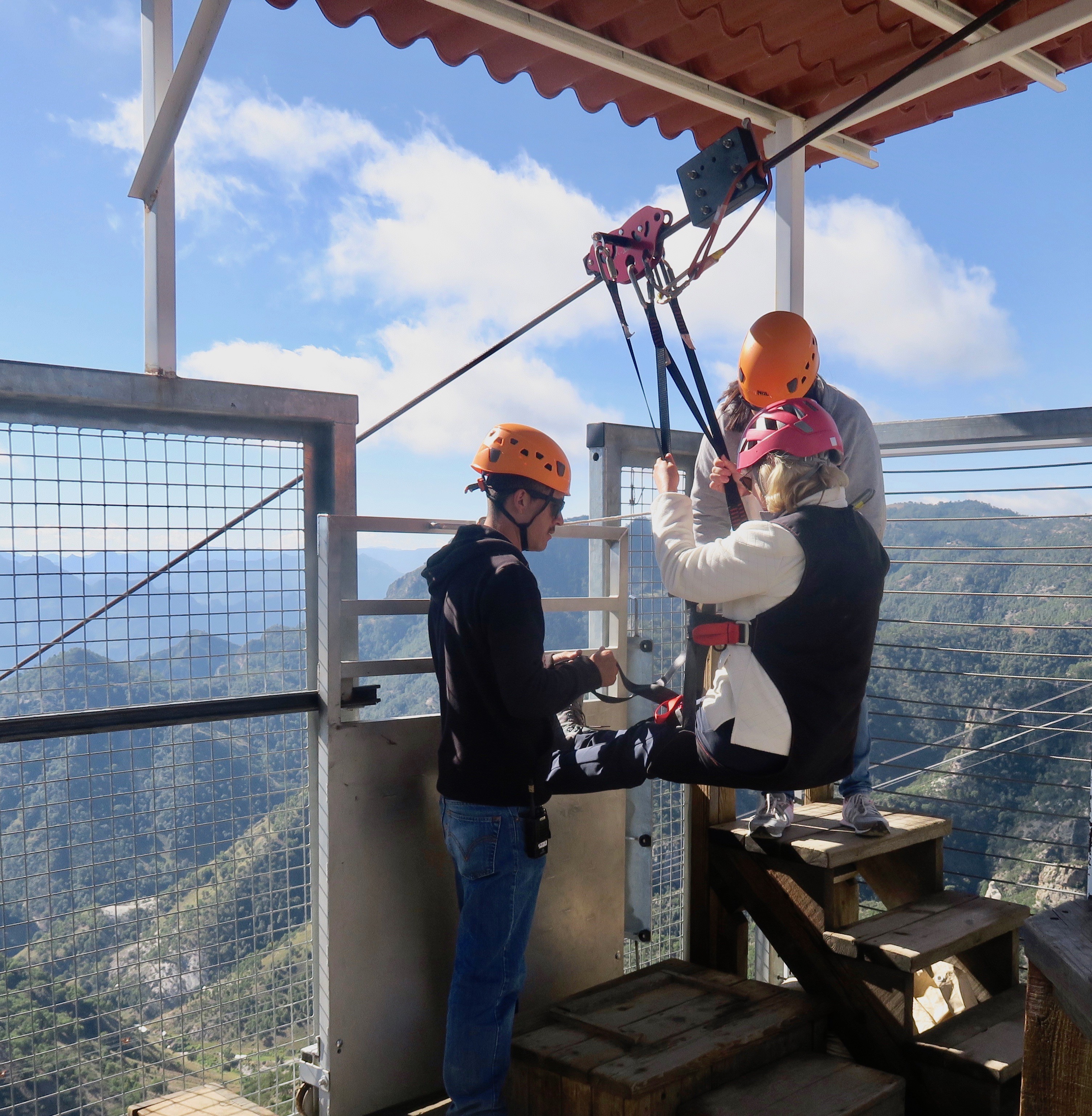
Being the klutz I am, I managed to shut off the video recording just after exiting the box, so I don’t have a video to show of this 2.5 km (8,350 feet) journey. I do know that after the initial adrenalin rush you get from just being this high off the ground and roaring along at a tremendous speed, that a sense of calm and wonder overtakes you and it is truly a zen like experience for the rest of the way.
This is the landing point where Alison, who went first, awaits.
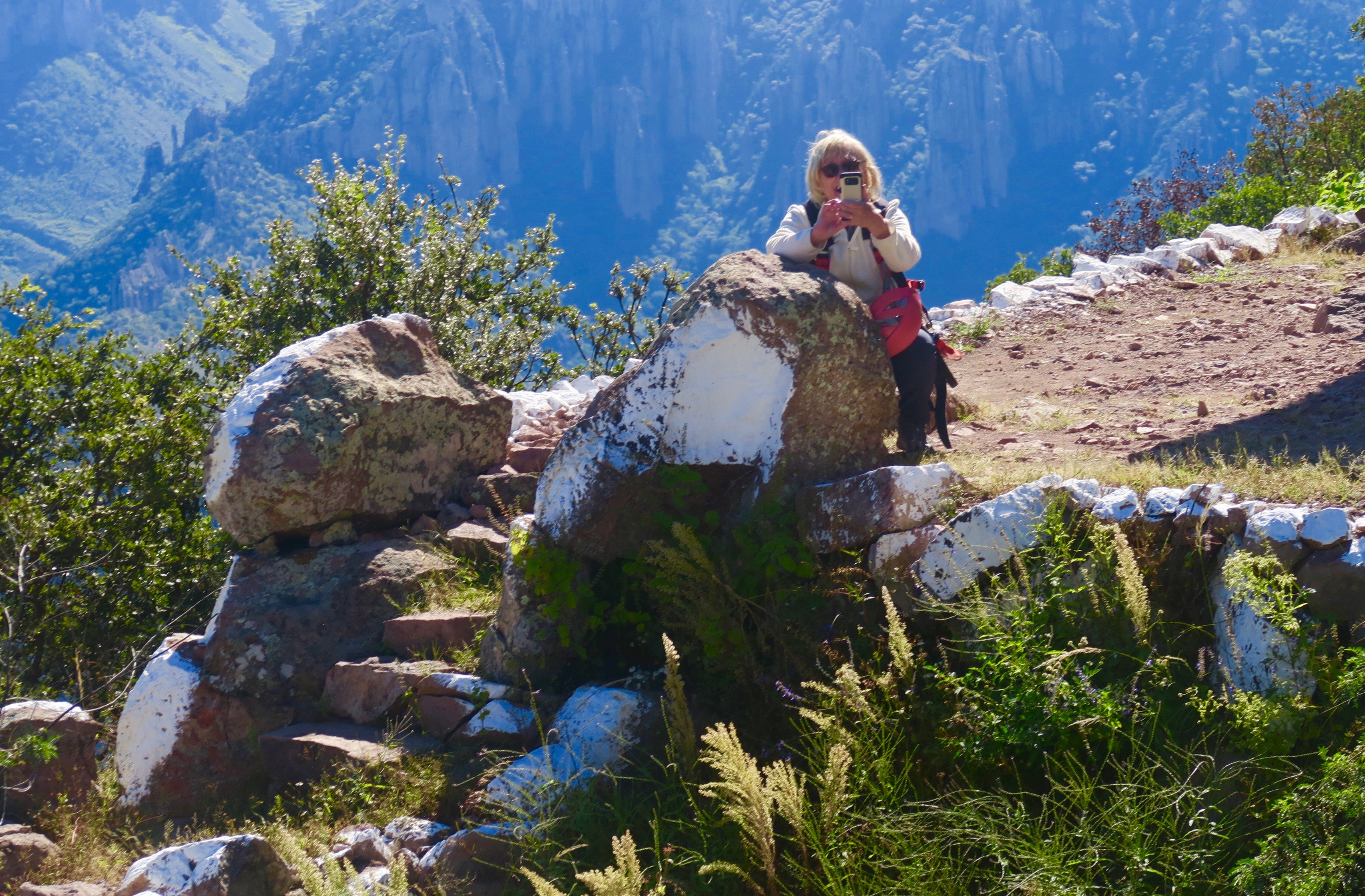
Now here comes the surprisingly part. Adrian had told us that after the zip rider we would need to walk up about 750 metres to reach the tram. This almost discouraged us from going and after the attendant indicated we needed to take our heavy gear back with us, I was wondering about the wisdom of the whole thing. However, we only had to tote the gear about 100 metres and hand it over to another attendant. Then we had a chance to look around and realized that the views from this path were completely different from the miradors at Divisidero and the Adventure Park. This is the view from the path to the tram. We could see up the actual Copper Canyon.
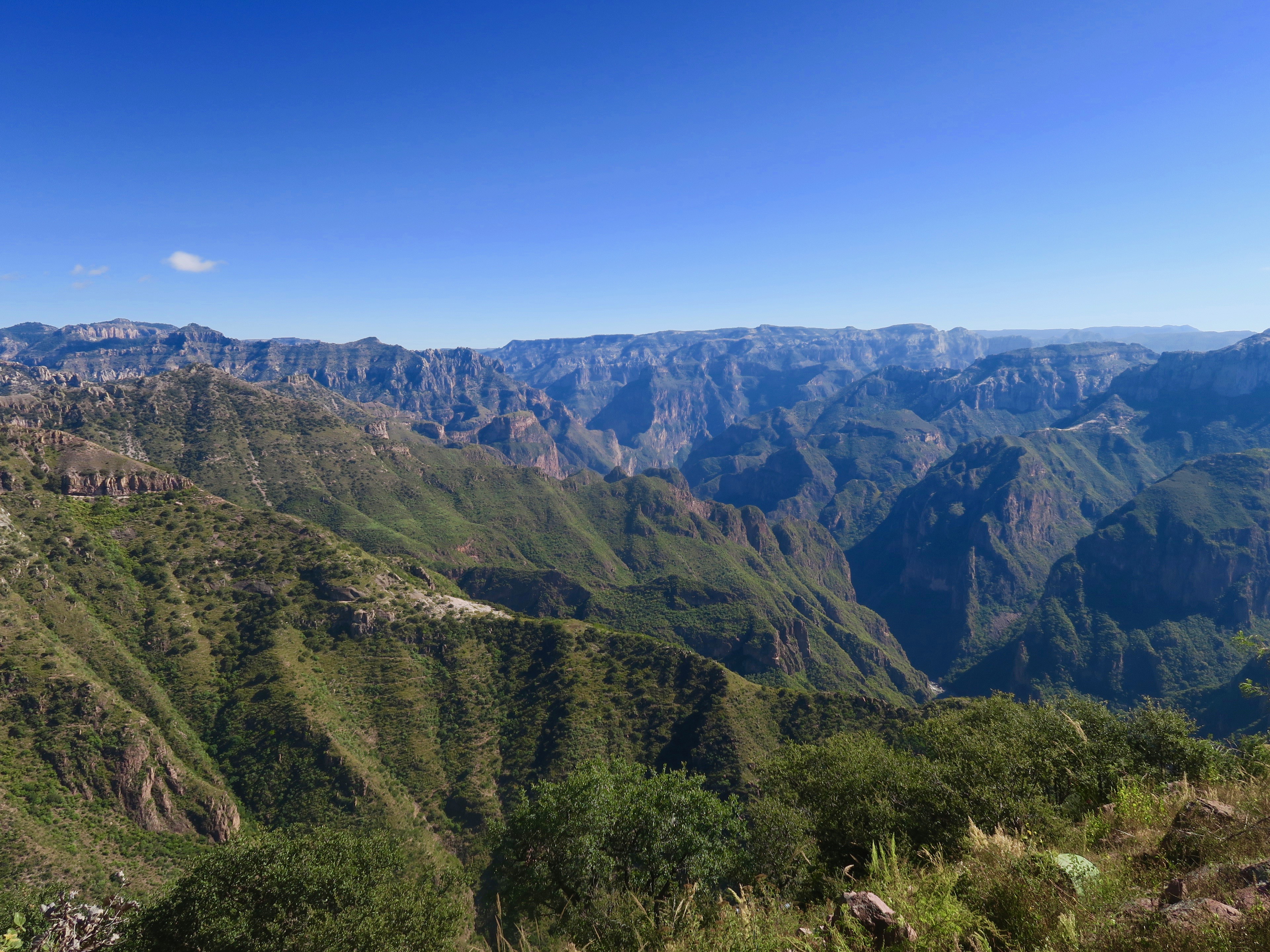
The path then snaked around to the other side of the mesa upon which the tram station is situate and there were more great views.

This is the Eagle’s Nest, a standing rock formation that you cannot see from the miradors.
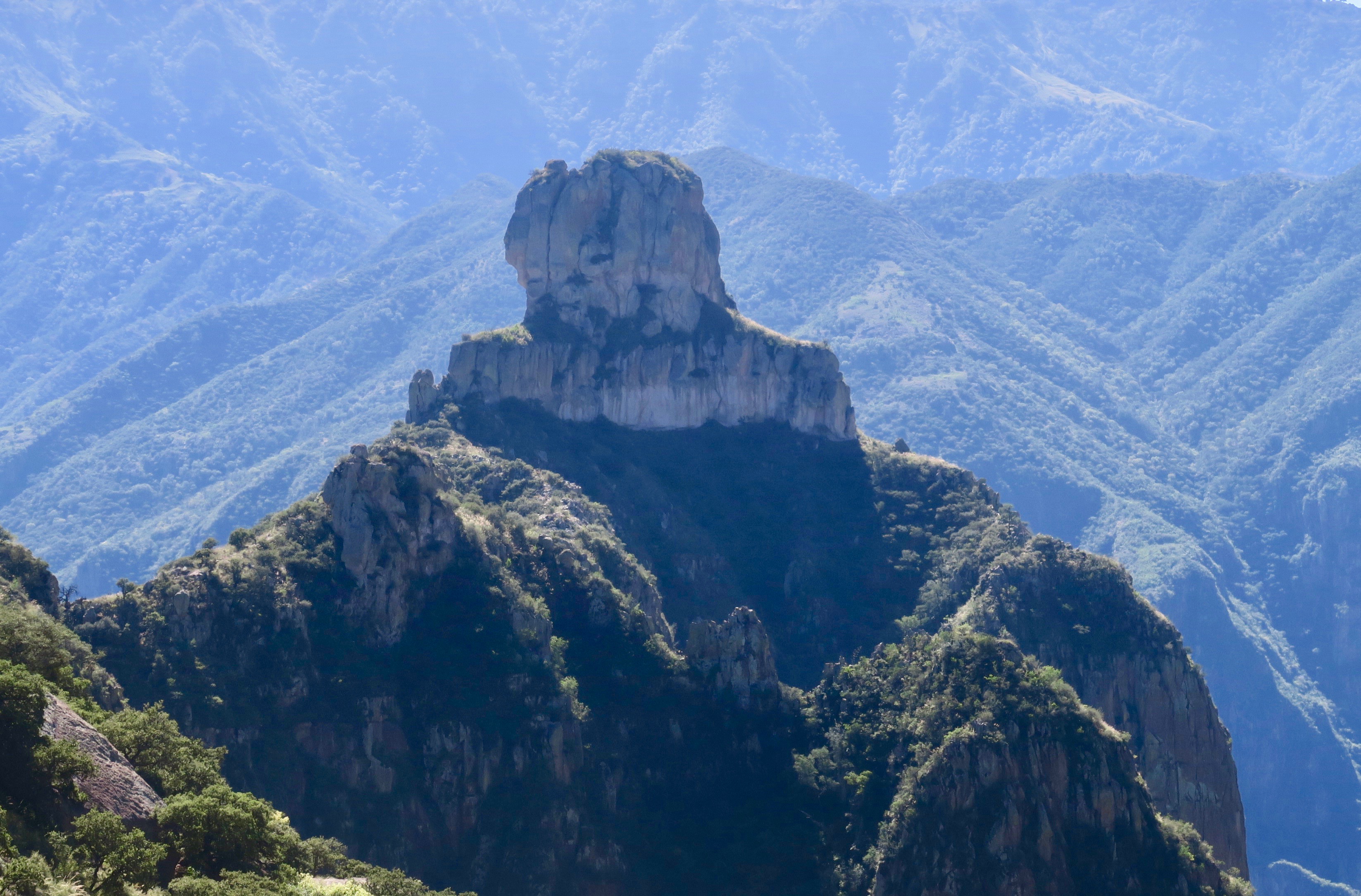
We also noted that there were Tarahumara houses spread throughout the canyons, usually well apart from each which is their traditional way of settlement. The only way to get to these houses is on foot or I suppose by burro although I did not see any in use while we were there. The method of transporting supplies in and handicrafts out is by wheelbarrow. In this photo two Tarahumara men were hundreds of feet below us making their way back up the hill to a remote residence. Now for us this would be considered a ridiculously difficult way to live, but for the Tarahumara, that’s just how it is.
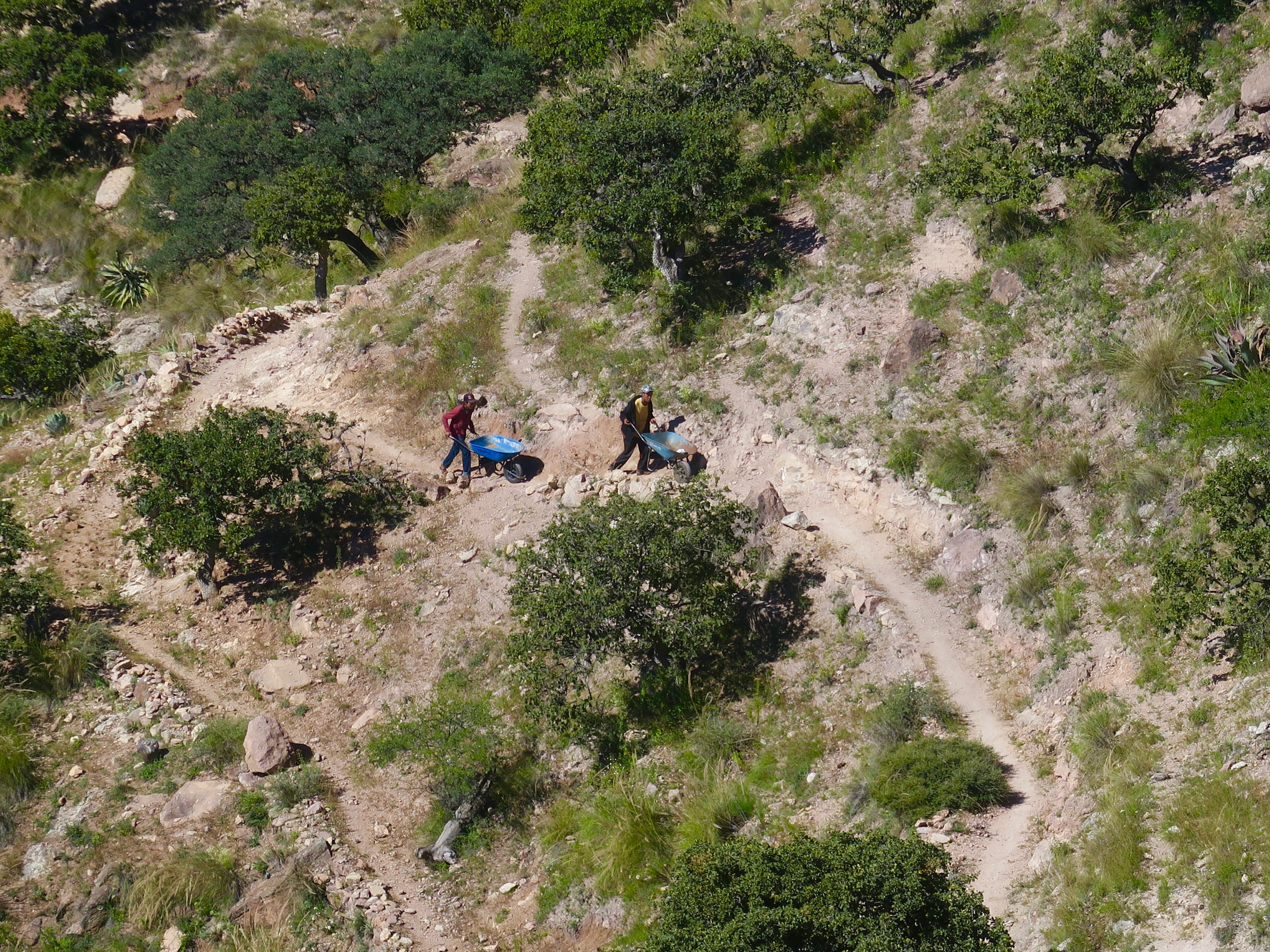
Once you reach the tram station there are more great views and a lot more people. The overwhelming number of visitors to the park just go on the tram and forego the more daring adventures. The ride back is quite interesting as you can clearly see the hotels embedded into the top side of canyon. That’s Hotel Mansion Tarahumara at the far left, just where the phone tower is sticking up. The large one beside it is under construction and the one on the right is the luxurious Hotel Mirador.
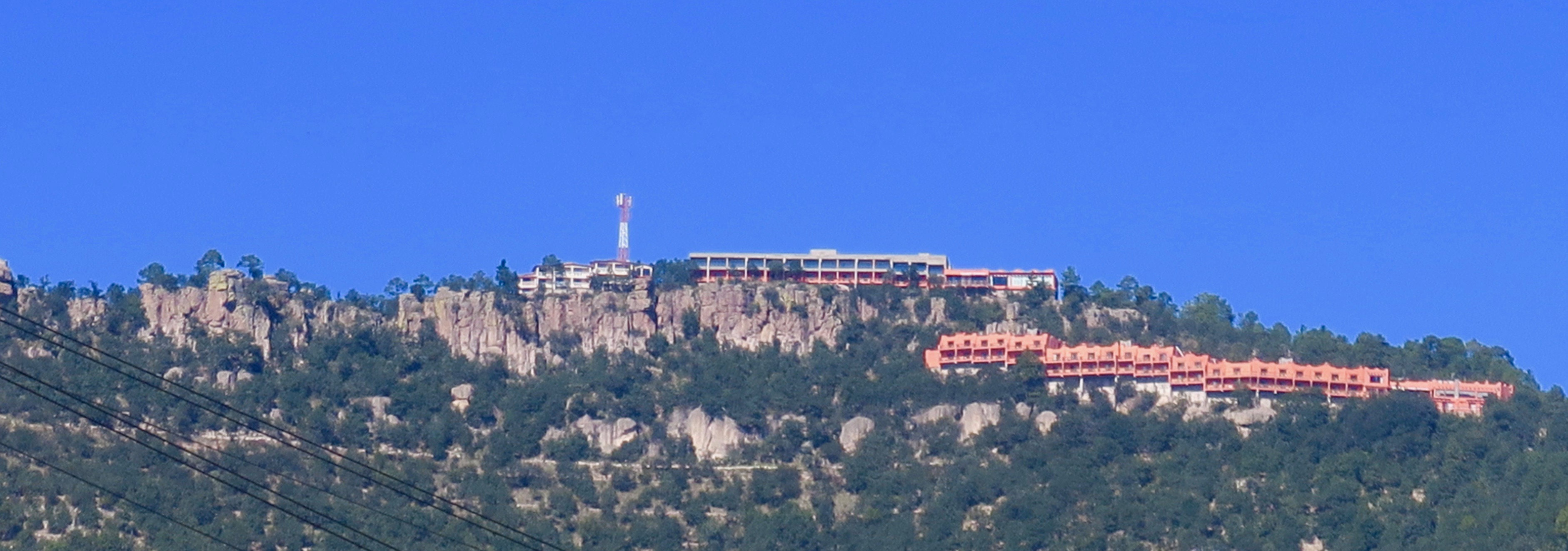
As you near the end of the tram ride you get a glimpse of the via ferrata which is another attraction for the non-faint of heart. You rappel down the cliff to what is literally an iron path and gradually make you way up to the top by linking your carabiners from one piece of embedded rebar to another. At no time are you ever totally disconnected and if done properly there is no risk of falling. However, it can get very strength sapping as you are defying gravity the whole way up. It really looked like this group nearing the end was totally exhausted and I confirmed that with them a bit later.
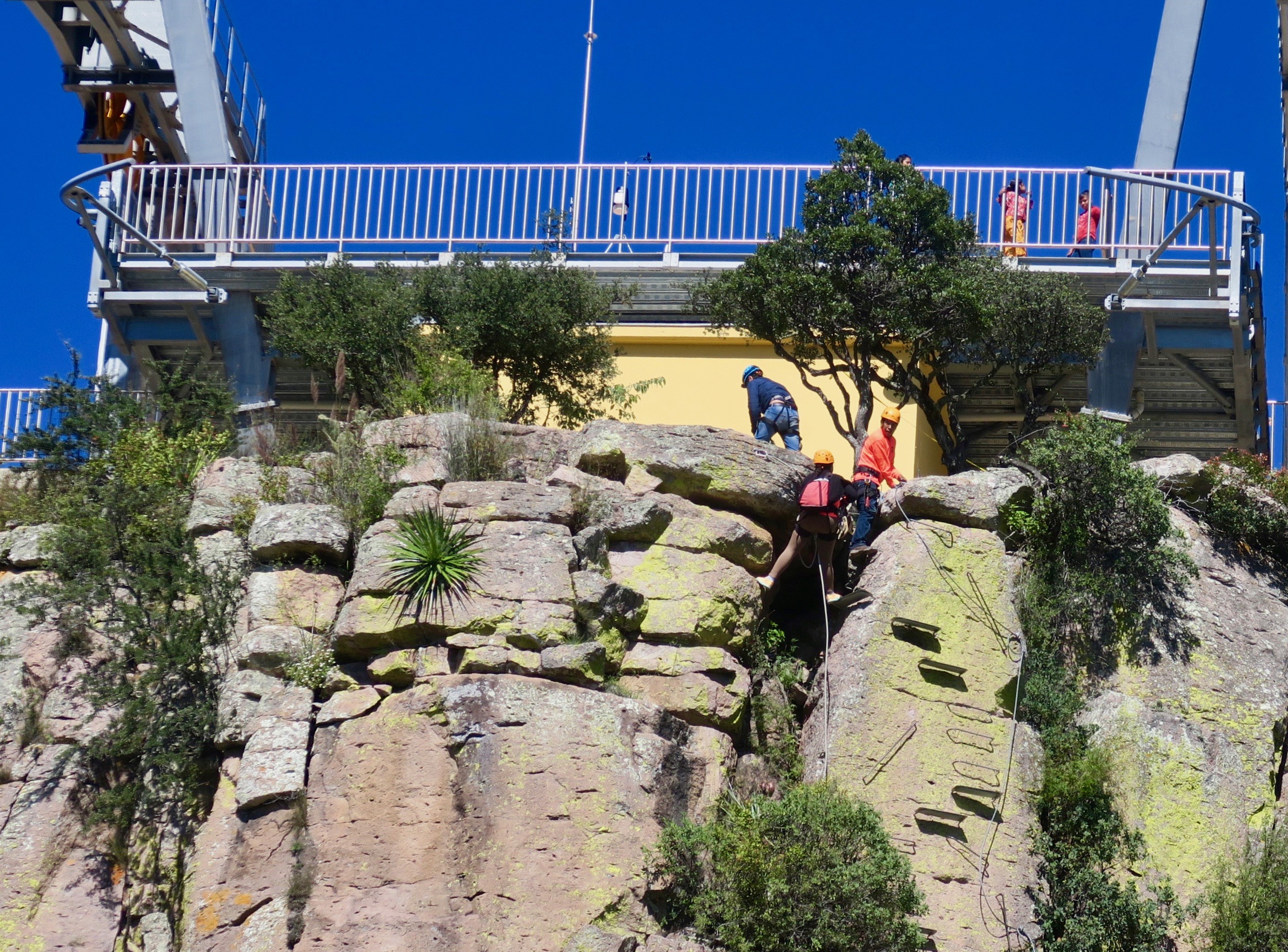
Well, that about wraps up our way too short visit to Copper Canyon. It is a place you really need to get to if you love nature, an adventuresome challenge or you just want to learn the ways of some of the most humble and interesting people you will ever meet.
Join me next when I check out some of the natural attractions of the magic town of Creel.

